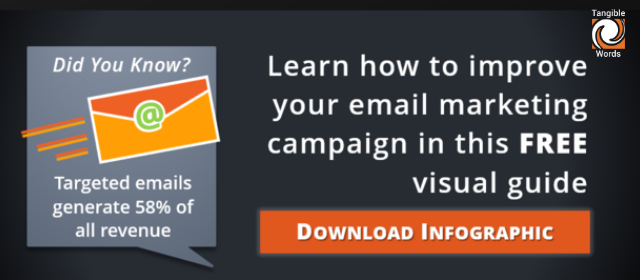SHARE
CASL Regulations: 5 Things You Need To Do Now

Imagine sending one little email and then getting a million dollar fine for it. Canada’s anti-spam legislation (CASL) makes that scary thought a reality. CASL prevents anyone from sending electronic messages like emails and texts without getting permission from the recipient first.
It’s easy to think of spam as all of those annoying Boxing Day emails flooding your inbox once a year, but this law applies to anyone sending electronic messages to recipients within Canada.
In order to save yourself and your company large fines and possibly lengthy court proceedings, these five guidelines will ensure your sales activities fall within CASL regulations.
Avoid A Million Dollar Fine By Following These Best Practices
1. Obtain Permission
Don’t assume, ask.
You know the old adage - don’t assume, ask first. The same applies to your marketing - gain consent before emailing anyone. There are two accepted ways to obtain consent:
- Express consent
- Implied consent
Express consent is when someone has clearly said they would like to be contacted through verbal cues or a written statement. Online, this is typically done through a website opt-in form that clearly communicates, “I want to be contacted”, in some way.
Implied consent is a little less formal. Say you meet someone at a tradeshow and they give you their business card or write down their email for you, this implies they welcome you to contact them. Or, say a customer purchases a product through you. It’s implied they would want you to notify them of product updates, recalls or even promotions on similar items. Just be warned, implied consent has an expiration date. You can only contact that person electronically up until 2 years after the last business transaction or communication has taken place.
2. Use a CRM
Nothing beats a good customer relationship management system (CRM). Not only are they organized, they are efficient and don’t require you to recall names, emails or numbers from memory (though if you have a strong memory, good on you).
With a good CRM system you can oversee who is approaching the two-year limit and send out an email encouraging they resubscribe to your list.
To comply with CASL regulations, you can organize all contacts in your database according to who does and who does not want to be contacted. In a CRM system like HubSpot’s, you can easily view who has unsubscribed from your newsletter and who has requested they not be contacted. In fact, if someone has unsubscribed in your HubSpot database, you will receive a message stating that they person has unsubscribed and you will not be able to email them.
3. You Can Email B2B Contacts, But...
Under section 9 of CASL, any existing business relationships counts as implied consent. To make sure you are adhering to the law, make sure that the recipient has:
- Made a purchase or entered into a business contract within the last 2 years
- Made an inquiry within the last 6 months
- Listed their contact information on a website or in a trade magazine
If you are contacting someone who has listed their information online or in a publication, it’s best practice to send an introductory message stating the relevancy of your contact request and asking if it is OK to reach out.
4. Use Website Forms to Obtain Consent
You may want to double-check with your marketing department to make sure the forms on your website follow CASL regulations. Make sure all forms on your website include:
- Your business name and contact information
- A clear request for the visitor to be contacted
- An unchecked checkbox that states “I would like to be contacted”
While you’re stopping by the marketing department, don’t forget to inquire on how they are keeping records of those who have opted-in, as this is the law. Do they use a CRM? Or keep printed records of those who’ve filled out online forms? Both are acceptable means of tracking who has given permission to be contacted, though you may find one is more organized than the other.
5. Your Emails Must Include...
Recipient consent before you send: We’re repeating this because it’s important! Don’t just add someone to your mailing list without having the implied or express permission first.
Business contact information: Include your business’s physical location and contact information. This helps the recipient contact you in case they no longer want to receive your emails, and so they can inquire about products, services and more.
An easy-to-use unsubscribe mechanism: This is usually an unsubscribe button or link. It’s important your email includes an unsubscribe option so those who no longer want your emails can opt-out. There’s no point in emailing someone who’s no longer qualified and sending unwanted emails looks bad on your organization.
So let’s review.
In order for you to legally email Canadian recipients, you must first have consent to do so. Once consent is given, you must keep it on record. Be sure to diligently keep your records and your database of contacts up-to-date to stay organized and avoid a million dollar fine.
Think You Have CASL Regulations Compliance Down? Here Are Email Secrets That Sell!
References:
Topics
- Content Creation (297)
- Growth-Driven Design Websites (167)
- Inbound Marketing (145)
- Sales Growth (133)
- Tangible Words (111)
- Search Engine Optimization (85)
- Social Media Marketing (83)
- Hubspot (76)
- Blogging for Business (75)
- Economic Development (64)
- Events & Training (60)
- Company Growth Podcast (49)
- Manufacturing (47)
- Tourism (46)
- Email Marketing (42)
- Case Stories (40)
- Testimonials & Client Feedback (36)
- Education and SaaS (23)
- Google (21)
- Careers (19)
- Inbound Marketing Agency (19)
- Cool Companies (18)
- FAQ (16)
- Alysha Dominico (13)
- Associations (7)
- Food and Beverage (7)
TW Blog Sign-Up
Learn more about how to grow your business and improve your sales team process.






